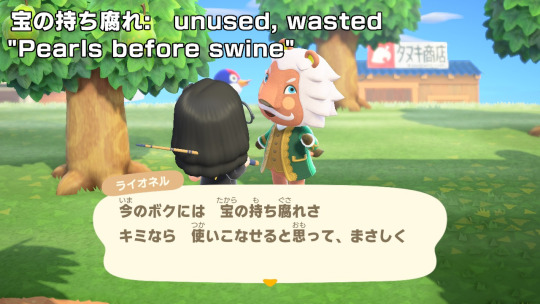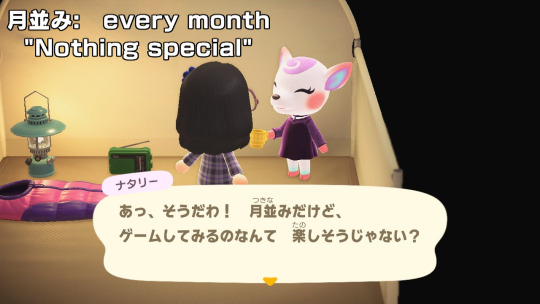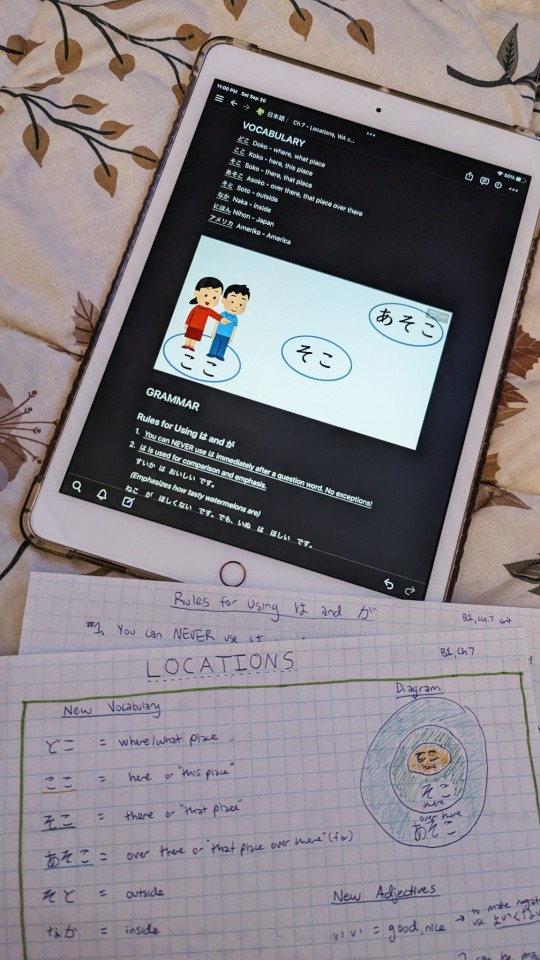#studying japanese
Explore tagged Tumblr posts
Text
tip for improving japanese reading speed!


how about you try some カラオケ???
i've been doing this for a couple years now and i think this has single-handedly made my reading speed in japanese improve to the point of almost being as fast as it is in english (although i still struggle with kanji and katakana sometimes x_x)
to find one, i usually just search on youtube (song name) followed by either カラオケ or ニコカラ. if nobody has made a karaoke for your song of choice, then i'd otherwise search up (song name) followed by 歌詞 (kashi/lyrics) and you'll usually find them that way. i like to use the site utaten.com because they all feature furigana! be a little careful though because while its only happened to me a couple of times, there's been times where the furigana is wrong for one or two words.
i think this is a really fun way to practice especially if you love singing, like i do!! i've never seen anyone else recommend this so i hope this helps
#japanese studyblr#japanese learning#studying japanese#learning japanese#learning languages#learn japanese#studyblr#japanese studyspo#language learning#japanese reading
416 notes
·
View notes
Text
How to Make Studying Japanese a Habit
The important takeaway here is rather than strict goals, you can try building healthy habits to help improve your Japanese goals.
I do this, and I didn't know there was a name for it, but this gives you tips and tricks and step-by-step to build your own healthy study habits. A good read!
174 notes
·
View notes
Text

To make studying fun, I often play video games in Japanese. The other day, I found a neat idiom when an NPC gave me a gift.
宝の持ち腐れ:literally, “a treasure rotting in hand” 宝:たから、"treasure" の:here, the possessive marker turns the next verb into a noun 持ち:もち、"have" or "hold" 腐れ:ぐされ、"rot"
It has the same meaning as the English phrase “pearls before swine”. Essentially, it means that something nice / valuable is being wasted on someone who does not appreciate it or use it to full potential.
Putting it all together to translate the text, we get:
今のボクには 宝の持ち腐れさ As for me right now, [it's like] pearls before swine.
キミなら 使いこな���ると思って、まさしく。 If it's you, I thought [you'd be] able to make use of [it], indeed.
After saying this, he gave me a rug. Not the treasure I was hoping for!
Corrections always welcome.
#japanese#japanese translation#japanese study#japanese studyblr#japanese studyspo#日本語#日本語の勉強#翻訳練習#studying japanese#japanese learning#japanese langblr#japanese language
86 notes
·
View notes
Text
JLPT N5 - している [Part 2]
Hey everyone, welcome to Part 2 of talking about している. This N5 grammar point is very basic but also very important. Let’s get into it shall we!
But first, here is your vocabulary:

【English Helping Verbs】
As I mentioned in Part 1, the “して“ in している can stand for any verb in て form. Sometimes it is actually する, but most times it will be some other verb.
Ok great, but what is the いる part?? Take a look at the following English sentences:
① Traffic accidents often occur here.
② I am eating.
③ The window is open.
Two of these sentences have both a helping verb and a main verb. In #1, there is only a main verb, which is “occur”. In #2 the main verb is “eating” and the helping verb is “am”. In #3 the main verb is “open” and the helping verb is “is”. Notice that one of the main verbs has the -ing suffix while the other two don’t. Make a mental note of this for later. 😉
【The いる in している】
Japanese also has helping verbs. Allow me to introduce you to one of the most common ones: いる!
The いる helping verb* adds nuance to the main verb. But here’s the thing - there are different versions of いる!In the している Part 1 article, you actually saw what I call the いる of Repetition. This いる does not translate to the -ing form of our verbs in English. If you see よく起きている for example, you should think “often occur(s)”. This is similar to example #1 above.
Examples #2 and 3 are not actions of repetition. For them, we need the other いる, which I call the いる of State or Condition. This いる sometimes makes us use that -ing suffix in our English translations. So if you just see 食べている, by default it would mean “started eating and then stayed in that state for some period of time”. Instead of all that, in English we would simply say “is eating”. This is similar to example #2 above.
開く is a different type of verb than 食べる**. Because of this, the いる of State or Condition does not lead to us using the -ing form. In this case, something is open and stays in that state for some period of time. We don’t say “is opening”. Instead we just say “is open”. For verbs like 開く, their English translations won’t use that -ing form. Instead they will be like example #3 above.
The key to the している grammar point is understanding what kind of main verb you have, and then which helping verb いる you are reading/hearing!
【いる of State or Condition】
Here are some examples where the helping verb いる expresses a state or condition.

This is how you say example #3 in Japanese.

= Tom is currently in the Philippines.
Interestingly, you could also say the following:
⑥ トムはフィリピンに来ています。***
⑦ トムはフィリピンにいます。
#5, 6 and 7 all say that Tom is in the Philippines but the nuance is different in each of them!
#5 says that Tom went to the Philippines and stayed there. This means that the speaker is NOT in the Philippines. On the other hand, #6 says that Tom came to the Philippines and then stayed there, meaning that the speaker is also there. #7 simply says that Tom is in the Philippines. We don’t have any information about where the speaker is located.

= Mizuki is wearing a white skirt and hat.
#8 has several things that I want to point out: First is that the て form of a verb can mark the end of a comment. Example 8 has two comments of equal value. This is one version of a Japanese compound sentence.
The second thing is that the ending helping verb can actually apply to TWO DIFFERENT main verbs! Native speakers hear #8 and understand the verbs to be both はいています as well as かぶっています.
The last thing is that verbs connected to clothes are very interesting. When you attach the helping verb いる, they can sometimes express the state of wearing something. However, in some contexts they can instead express the action of putting something on. For the N5 level luckily you won’t have to distinguish between wearing and putting on clothing so no worries. It is good to keep this tidbit in the back of your mind for the future though.
【Conclusion】
So there you have it. Now you know that the している grammar point can express several situations. You could have:
・Repetition - there will be a word/phrase that indicates that the action happens repeatedly. The English translation won’t use the -ing form of a verb
・State or a Condition - there MAY or may not be a word/phrase indicating repetition. The main thing to focus on is whether the verb is an action verb or not. This will help you decide if you need -ing or not.
As always, keep your eyes and ears open for different kinds of examples and try to notice patterns. You can do it!
Rice & Peace,
– AL
👋🏾
*I purposely say “the helping verb いる“because there is also the regular いる verb. It’s the same with the “be”, “do” and “have” verbs in English. “Am” in “I am a teacher” plays a different role than the one in “I am eating.”
** 食べる is a transitive verb while 開く is an intransitive verb. Usually transitive verbs will translate to -ing and intransitive verbs won’t. Of course there are exceptions so keep an open mind.
*** When choosing between 来ている、行っている、and いる think about where the speaker is located as well as if you want to stress the movement of the subject.
#japanese#japanese studyblr#japanese language#japanese grammar#日本語#isshonihongo#jlpt n5#jlptn5#jlpt#nihongo#japanese langblr#learn japanese#japanese lesson#japanese study#studying japanese#japaneselessons#learnjapanese#language#languages#language study#language studyblr#language blr#日本語の勉強#にほんご
54 notes
·
View notes
Text
I'm about to start a series of studying the Japanese spoken in The Makanai. I'm a bit late to the party, but I really enjoy the Makanai and have been rewatching it like crazy. Even though it's in Kyoto dialect, it really helped improve my Japanese comprehension.
70 notes
·
View notes
Text
Today really is "well I failed the JLPT day" 😅 nvm folks, we tried!
#i know a lot people who took it and only one of them so far has said they passed#and he went in for n4 thinking he could probably pass n3 but didn't want to push himself when it was his first time taking it#it's just been a slew of 'yeah i failed' 'oh me too' 'same here'#jlpt#studying japanese#japanese langblr
14 notes
·
View notes
Text
It's only been a few days since I started learning from my Anki deck (VN Core 1250 v3, which is described as better than the other Core 2k/6k decks that tend to have words pulled from strange frequency lists) and I am already noticing the vocabulary I've learned in almost every Japanese text I read, or Japanese songs I listen to.
I used to just review my Anki decks daily and call it a day, thinking it was enough learning, but reading more, even when it seems like gibberish, helps tremendously.
I am getting closer to my goal daily :) It's time to review some grammar (right now I don't know what the particle に really stands for) and review my cards!
Right now (as of September 13th), my Kanji grid looks like this. As I progress (in a few short months), the red Kanji will slowly go from red to green and I'll have seen more than half of the Kanji in this image instead of the dozen or so that are in red.
Can't wait :)

16 notes
·
View notes
Text
Introduction + Goal setting
Hello everyone! Nice to meet you, my name is Momoe and this is my Japanese studyblr!
My goals:
Short term (from 07/09-07/16): complete lesson 1-3 of Tobira Beginning 1
Medium term (before December 2024): start tobira beginning 2 textbook
Long term (next year): take the JLPT N3 exam in December 2025
My current study plan: Tobira Beginning 1 + Workbooks -> Tobira Beginning 2 + Workbooks -> Nihongo Alive, Kodansha Kanji Learner's Course + readers* -> Tobira + Power Up Your Kanji + Grammar Power -> Shin Kanzen master N3
Bolded is the absolute must complete before December 2025.... only 3100 pages of material ha ha.
Plan to work, and work the plan! 頑張れます!
16 notes
·
View notes
Text
狐の結婚式・Fox Wedding

寒くて晴れた朝、娘と一緒に公園を通って駅に歩いている時、青空から何かが降ってきた。「見て。あれ何?雨?」と私が娘に聞いた。「うん!雨だ!いいえ、雪だ!」と娘が叫んだ。確かに、浮かんでいるように降っているが、どこから来たの?空高くにうっすらとした雲���つしか見えない。毎日同じ時間に家を出るから、毎日同じお散歩中のおじいさんとすれ違う。「おはようございます!」とそのおじいさんが声をかけてくれた。私と娘もまだ降っているものを見ているから、おじいさんも空を見た。「何かが降っている」と私が言ったが、「何も見えない」とおじいさんが笑いながら返事した。手を振って「また明日」と言ってから、駅に行った。
大学1人生の時、英語の授業で日本の神話上の狐について小論文を書いた。書くために、狐が出る伝説を読んだり京都の世界中で有名な伏見稲荷大社について調べたりしている時、九尾の狐や狐の嫁入りなどの伝説は初めて知った。この伝説は日本だけにあると思ったが、2023年の11月に「九尾狐伝」という韓国ドラマを見た。このドラマを見て、日本の伝説と同じく、韓国の伝説による狐が1000年生きたら尾9つを得ることがわかった。韓国にも晴れているのに雨が降るのを見て「今日は狐の結婚式がある」と言う人がいる。
英語には「sunshower」という詩的な言葉があるが、科学的な根拠を調べたらサンシャワーは全然詩的なものではないと感じる。伝説の空想上の説明が定義上現実的ではないけど、そっちの説明に信じる方が楽しい。
One clear, chilly morning, my daughter and I spotted something falling from the blue sky on our way to the station through the park. “Do you see that?” I asked her. “What is it? Rain” She shouted, “Yes! It’s rain! Wait, it’s snow!” Yeah, it really was floating down, but where did it come from? We leave home the same time every morning, so we pass the same older man on his walk every day. I heard him call, “Good morning!” Since my daughter and I were still watching the sky, he also looked up. I told him, “Somethings falling,” but he laughed and said, “I can’t see anything.” We waved goodbye and said, “See you tomorrow!” Then we continued on to the station.
In my first year at university, I wrote a paper on foxes in Japanese mythology. While doing some research for the paper, I read some legends that foxes appear in and looked up information about the world-famous Fushimi Inari Shrine in Kyoto and learned about the nine-tailed fox and the “fox wedding,” or rain that falls on a clear day. I thought these were uniquely Japanese legends until watching the Korean drama “Tales of the Nine-Tailed” in November of 2023. While watching this drama, I learned that, like in Japanese legends, Korean legends say a fox gets nine tails after living for one thousand years. I also learned that some Korean people also say, “There must be a fox wedding today,” when rain falls from a cloudless sky.
In English, we have the poetic term “sunshower,” but if you look up the scientific cause, sunshowers aren’t really so poetic at all. While the legendary explanation by definition isn’t realistic, believing in it is a lot more fun.
#japan#watercolor#drawing#絵葉書#painting#fox#foxes#studying languages#studying japanese#日本語の勉強#狐#キツネ#エッセイ#essay writing#langblr#postcards from japan
12 notes
·
View notes
Text
Happy Tanabata Festivall🎋✨
Today it’s the 7th of 7th which is a magical day filled with love and miracles.
The number 7 is considered to be the number of spiritual perfection because it’s a symbol of God’s work.
It’s a symbol of completeness and heaven.

Today we are celebrating the meeting of the deities Orihime and Hikoboshi, represented by the stars Vega and Altair.
Princess Orihime was a beautiful seamstress who wove gorgeous clothes by the Heavenly River, represented by the Milky way. Princess Orihime was so engaged with her work, she became despaired of ever finding her true love. Her father, a God of the Heavens, the Emperor of the Galaxy, loved her dearly and arranged for her to meet the lovely Hikoboshi, the cow herder who lived on the other side of the Heavenly River. It was love at first sight and they got married right away.
Their love and devotion to each other was so deep that Princess Orihime stopped weaving and Hikoboshi allowed his cows to wander the Heavens.
The Emperor became so angry that he forbade the two lovers to be together, sending Hikoboshi to the other side of the Milky Way.
Beside herself with loneliness, Princess Orihime cried and cried. Beginning the rainy season with her tears.
The Emperor couldn’t stand to see his daughter in this state, so he allowed her to visit her dearest Hikoboshi one day a year, the 7th of the 7th.
This legend is known as Tanabata 七夕 meaning “Evening of the Sevens” also know as Hoshi Matsuri 星祭り meaning Star Festival.
It originally comes from the Chinese Qixi Festival 七夕节 which is the 7th of 7th from the Lunar calendar. It was brought to Japan during the 8th century.
To honor the Star Crossed Lovers people write their wishes on colourful thin strips of paper called tanzaku 短冊紙 and hang them from bamboo branches.
I hope you enjoyed this story.
Have a lovely day and may all of your beautiful wishes come true! 💋💖✨
#tanabata#star festival#七夕#星祭り#hoshi matsuri#tanzaku#nihongo#studying japanese#expatlife#life in japan#日本語
63 notes
·
View notes
Text

Trying to work on essays about my recent trip to the US, but somebody wants me to do something else…
#cats#cats of tumblr#catblr#pretty kitty#japan#cute cat#猫#essay writing#studying japanese#日本語の勉強#i always feel like somebody’s watching meee
5 notes
·
View notes
Text
17/12/24

these past few days have been so productive!!! my internet has been off for a couple days by now, but on the bright side that enabled me to read even more than i usually would. im about halfway through kimi no na wa as of writing, and im only around 50 pages away from completing my first japanese book, わたしが「わたし」を助けに行こう !! i’m very proud of myself.
behind kimi no na wa is the textbook 留学生の日本語。im sure you can guess from the title, the textbook is specifically for those looking to study abroad in japan. im only at the start but im finding it interesting so far, the edition i have there is the first in the series, ‘writing comprehension’.
ps, sorry for not posting for so long. lol.
#learning japanese#japanese learning#japanese studyblr#studyblr#language learning#japanese studyspo#learn japanese#japanese studyblogging#learning languages#studying japanese#japanese reading
27 notes
·
View notes
Text
Sharks (Japanese)

Patreon
#studyblr#notes#langblr#language#japanese#japanese studyblr#japanese notes#japanese langblr#japanese language#japanese learning#learning japanese#japanese studying#studying japanese#learn japanese#study japanese#languages#linguistics#vocab#vocabulary#japanese vocab#japanese vocabulary#japanese vocab list#japanese vocabulary list#vocab list#vocabulary list
7 notes
·
View notes
Text
More neat words and phrases I've come across while "studying". I did my best to translate, but corrections/suggestions are always welcome.

お手上げ:to give up, hopeless (literally, "to raise one's hands")
お:honorific prefix 手:て、hand(s) 上げ:あげ、raise
This phrase describes giving up, or being in a situation so hopeless that the only thing you can do is throw your hands up in the air and walk away from the problem.
「ゴメン、お手上げだよ!」 "Sorry, [I] give up!"

月並み:commonplace / cliché (literally, "every month")
月:つき、month / "moon" 並み:なみ、each / common
I guess something could be considered common if it happens at least once a month. Apparently, this phrase was originally used as an insult towards old-fashioned poets who would meet monthly to write poetry. In this case, the NPC used this phrase about playing a game, because these guys always do that when they're hanging in a tent.
「月並みだけど、ゲームしてみるのなんて 楽しそうじゃない?」 "[It's] cliché, but doesn't it seem fun to try something like playing a game?"
In the screenshot, I opted to translate it as "nothing special" to try and sound more natural. I think past me was onto something.
#japanese#japanese translation#japanese study#japanese studyspo#japanese studyblr#日本語#日本語の勉強#翻訳練習#studying japanese#japanese learning#japanese langblr#japanese language
48 notes
·
View notes
Text

Transferring my messy handwritten notes to Notion so I can always access them 📑
Aaand suddenly it's 11 o'clock which is two hours past my bedtime YIKES (I'm old)
#study#studyblr#langblr#studying languages#learning Japanese#studying Japanese#nihongo#hiragana#grammar study#messy notes#messy handwriting#handwritten notes#digital notes#Notion#study time#never stop learning#japanese language
30 notes
·
View notes